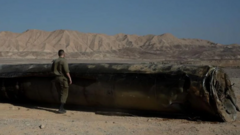A troubling report reveals that a significant quantity of US military weapons and equipment, appropriated by the Taliban post-2021 takeover, has been sold or smuggled into the hands of various militant groups, including al-Qaeda affiliates. It is estimated that the Taliban seized around one million weapons, but a substantial portion is now unaccounted for. Sources disclose that at least half a million items, including American-made firearms, have somehow vanished from Taliban control or made their way onto the black market. Despite claims from Taliban officials asserting strict management of their weapon inventory, internal and international reports shed light on a flourishing arms trade, raising fears over the destabilizing impact on regional security.
US-Made Weapons from Afghanistan Find Their Way to Militant Groups

US-Made Weapons from Afghanistan Find Their Way to Militant Groups
The conflict in Afghanistan sees US weapons exploited by terrorist factions as challenges to security escalate.
The controversy stems from the chaotic withdrawal of US forces from Afghanistan, with many Afghan soldiers either abandoning their posts or being compelled to relinquish their arms. A significant portion of the military cache—which includes M4 and M16 rifles—was left in Afghanistan, leading to opportunistic sales. Reports from the UN indicate that various militant organizations, including Tehreek-e-Taliban Pakistan and the Islamic Movement of Uzbekistan, are now acquiring these weapons, either through direct access or black market purchases.
In a recent closed-door meeting of the UN Security Council, the Taliban acknowledged the loss of a large share of their arms but firmly denied any claims surrounding smuggling. A 2023 report highlighted that Taliban local commanders retain control over a significant percentage of US weapons, fueling an illicit market thriving on the demand for arms.
Former Afghan officials and local journalists reported an observable rise in arms trading, particularly via discreet communications platforms post-Taliban governance. The US oversight body for Afghan reconstruction, SIGAR, has reported that there have been discrepancies in recorded numbers of weaponry, as various departments distributed military aid through less organized processes. The challenges within tracking this equipment have triggered political agitation, notably from past US President Donald Trump, who has contested the operational integrity of these military assets left to the Taliban.
While ongoing efforts to reclaim these weapons may be politically charged, analysts speculate that any attempt to retrieve US arms might be impractical due to excessive costs outweighing their actual value. As the Taliban parades their captured arms, the real implications of their access to advanced weaponry escalate concerns regarding heightened violence and militant capabilities across the region.
In a recent closed-door meeting of the UN Security Council, the Taliban acknowledged the loss of a large share of their arms but firmly denied any claims surrounding smuggling. A 2023 report highlighted that Taliban local commanders retain control over a significant percentage of US weapons, fueling an illicit market thriving on the demand for arms.
Former Afghan officials and local journalists reported an observable rise in arms trading, particularly via discreet communications platforms post-Taliban governance. The US oversight body for Afghan reconstruction, SIGAR, has reported that there have been discrepancies in recorded numbers of weaponry, as various departments distributed military aid through less organized processes. The challenges within tracking this equipment have triggered political agitation, notably from past US President Donald Trump, who has contested the operational integrity of these military assets left to the Taliban.
While ongoing efforts to reclaim these weapons may be politically charged, analysts speculate that any attempt to retrieve US arms might be impractical due to excessive costs outweighing their actual value. As the Taliban parades their captured arms, the real implications of their access to advanced weaponry escalate concerns regarding heightened violence and militant capabilities across the region.





















